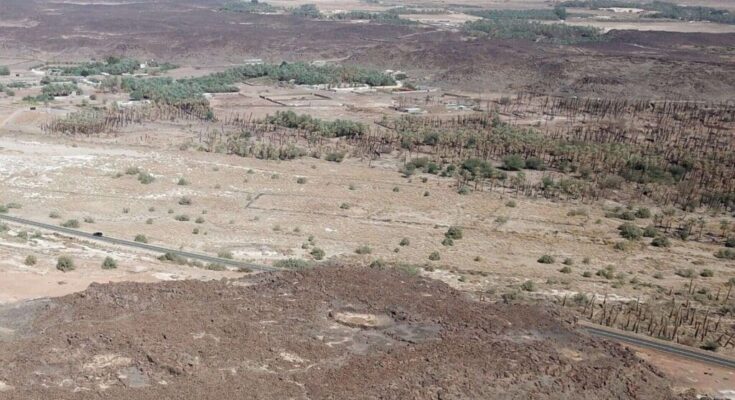
Researchers have uncovered an ancient town, about 4,400 years old, in Saudi Arabia’s Khaybar Oasis. The bronze age settlement site, called “al-Natah,” was found near the city of Al-‘Ula in western Saudi Arabia. It covered around 3.7 acres and featured a central area, surrounded homes, and a protective wall.
Settlement in this town began around 2400 B.C., with an estimated population of about 500. The findings, published in the journal PLOS One, suggest that urban life here was more modest in scale than in neighboring regions.
Artifacts and structure indicate early community life
Researchers found pottery fragments, grinding stones, and remains of about 50 houses, likely built with earthen materials. In the central area, two larger structures might have served as administrative buildings.
A cemetery, located in the western part of the town’s core, contained large circular tombs known as “stepped tower tombs,” indicating early burial practices.
Hints of farming practices
Although no written records have been found at al-Natah, lead researcher Guillaume Charloux, an archaeologist with France’s National Center for Scientific Research (CNRS), stated that the few cereal traces uncovered suggest residents may have farmed nearby.
Researchers believe farming practices were beginning to take hold, marking a transition from a nomadic lifestyle to a more settled one. A surrounding wall stretching nearly 9 miles likely protected the area from potential raids by nomadic groups.
However, the reasons for the town’s eventual abandonment between 1500 and 1300 B.C. remain unknown. “It’s a pertinent question that I can’t really answer at the moment,” Charloux noted.
Slower urban development in Northern Arabia
While al-Natah existed, urban centers in Mesopotamia, Egypt, and the eastern Mediterranean had already grown significantly. Evidence from this and other sites in the region shows that urbanization on the Arabian Peninsula moved slower.
Researchers describe the settlements in northern Arabia as being in a “low urbanization” phase. It is a transitional stage between nomadic pastoralism – where people moved with their livestock – and more complex urban settlements.
Compared to large Bronze Age cities in Egypt and Mesopotamia, towns in Saudi Arabia were generally smaller and less complex. “These were small towns connected to networks of monumental ramparts surrounding the large local oases,” Charloux said. He also noted that they served as early community hubs but lacked the scale of true urban centers.
The study has earned praise from archaeologists worldwide. Juan Manuel Tebes, head of the Center of Studies of Ancient Near Eastern History in Argentina, called the project a significant step in understanding the region’s past.
He noted it built on decades of excavation in Saudi Arabia, where finds at other sites like Tayma and Qurayyah have also provided valuable clues about ancient life.



